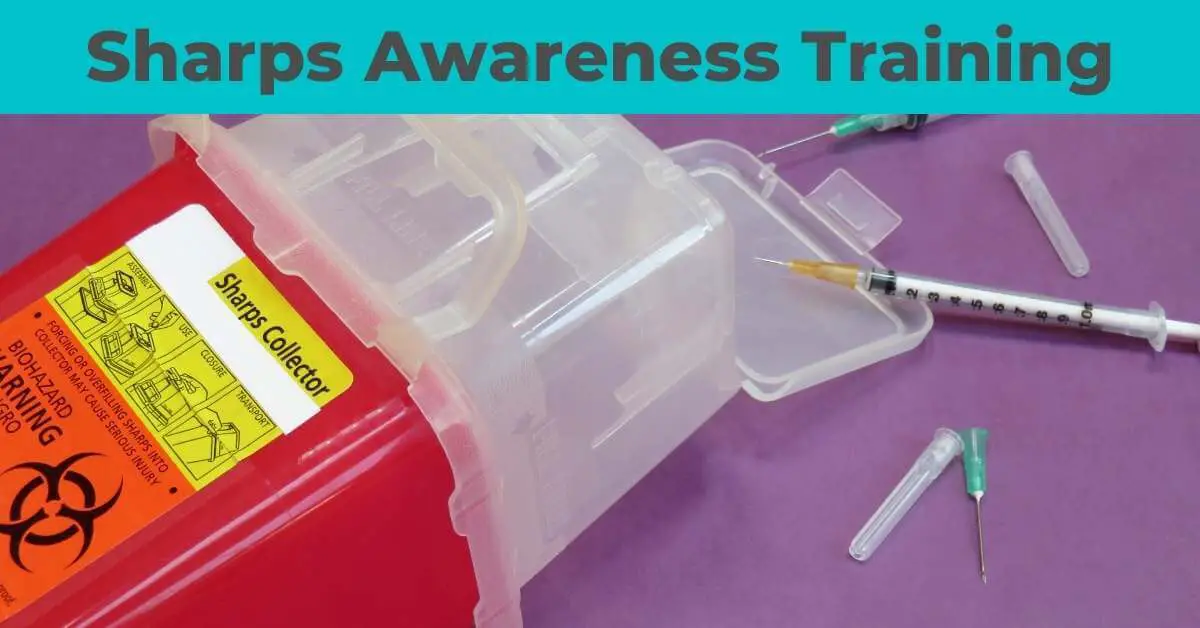Introduction
Sharps Awareness training course raises your awareness of the dangers of sharp objects and mishandling them. In this course, you will learn about the health concerns associated with improper handling of sharps, safe handling techniques, and sharps disposal. The information you acquire will enable you to operate with sharps safely and prevent the illnesses and injuries they are known to cause.
What is sharps awareness?
Sharps Awareness training looks at the dangers and health risks connected to sharps as well as the proper management and disposal of them. The regulatory requirements and risk management strategies needed to reduce sharp injuries are also covered.
A sharp is anything that can pierce, nick, or cut the flesh. Scalpels, knives, and other tools widely used in the medical industry are included in this. Sharp wounds increase the danger of serious infection and disease for the victims. This online course assists companies in fulfilling their legal obligation to give everyone who might be exposed to this hazard adequate training.
How to prevent sharps?
Injuries from needlesticks and other sharp objects are a severe risk in any hospital environment. Healthcare professionals may come into contact with blood that includes infections that offer a serious, potentially fatal danger if they use infected needles, scalpels, broken glass, or other sharp objects.
- Create a bloodborne pathogen control programme that complies with all OSHA bloodborne pathogens standard standards.
- If safe and effective alternatives are available, stop using needle devices.
- give safety features to needle devices
- Give staff sharps containers to carry into clients’ homes
- Investigate each injury caused by sharp objects.
- Make a post-exposure medical examination available.
- When safe and effective alternatives are available, avoid using needles.
- Recapping or bending needles that could be infected should be avoided.
- Bring sharps containers with standard labels that are impervious to leaks and punctures to clients’ houses. Don’t assume there will be any such containers. Sharps and used needles that could be contaminated should be promptly disposed of in the containers.
- Before using needles, make plans for their safe storage and disposal. Store sharps containers out of the reach of children, dogs, and other people who don’t need them. Protect used sharps containers during travel to prevent spills.
- Consistently apply conventional precautions, infection prevention, and general hygiene
- Participate in your employer’s bloodborne pathogens training programme and assist them in choosing and evaluating safety-featured gadgets.
- Utilize the safety-featured equipment that your employer has provided.
- Inform your employer right away of any injuries caused by needlesticks or other sharps.
Why is sharps safety important?
Sharps training is critical for anyone whose job duties may require them to come into touch with sharp objects that could cause harm or disease.
While it may seem that those who execute searches, such as police officers and customs agents, are the most obvious recipients of this health and safety training, in truth, everyone who has the potential to come into touch with sharp objects would benefit from it. Construction, demolition, cleaning, grounds upkeep, and many other professions are examples.
Best course for sharps awareness
Nursing Revalidation offers best Sharp Awareness Training Course.
In this course you’ll learn about the prevalence and different types of ‘sharps litter’ that can be found in the UK. It then covers the primary and secondary risks from sharps including some of the common blood borne viruses. It also covers the responsibilities of employers, the equipment needed and the effectiveness of PPE. Finally, it’ll cover how to report discarded sharps and the correct procedures to follow if you’re unlucky enough to receive a sharps injury.
The bottom line
The sharps awareness training online emphasises the dangers of needle sticks and other sharps injuries and describes safe working practises that people who work in potentially dangerous environments can use to reduce their chance of getting hurt.

